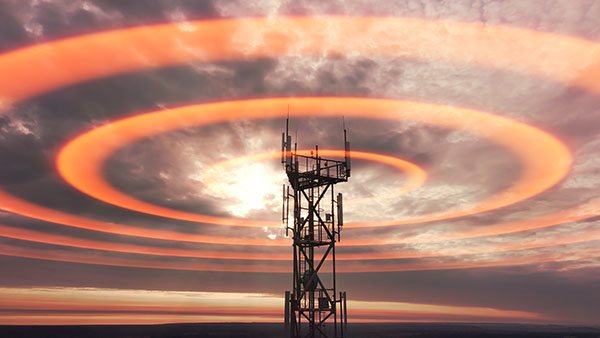EMR Syndrome: a new name for a growing 21st-century health issue

Millions of people worldwide experience debilitating symptoms—ranging from headaches and insomnia to heart palpitations and cognitive impairments—when exposed to electromagnetic radiation (EMR) from everyday technologies like cellphones, Wi-Fi routers, and smart devices. Until now, this condition has been known by a patchwork of names, including electromagnetic sensitivity, electrohypersensitivity, and microwave syndrome, creating confusion and stigma for those affected. In a landmark effort to unify and destigmatize the condition, the OneName Project has introduced a new term: Electromagnetic Radiation Syndrome, or EMR Syndrome.
The announcement, made in January 2025, marks a turning point for individuals living with EMR-related disabilities, as well as for advocates, scientists, and medical professionals working to raise awareness and secure recognition for the condition. The new name aims to simplify public understanding, foster advocacy, and pave the way for global recognition.
Why the name matters
For years, the lack of a single, universally accepted term has hindered efforts to educate the public, advocate for accommodations, and push for scientific research. Names like “electrohypersensitivity” or “microwave syndrome” often stigmatized individuals by framing the issue as a personal sensitivity rather than a physiological response to environmental factors. Others, such as “Havana syndrome,” were confusing or misleading, evoking geopolitical intrigue rather than the pervasive impact of wireless radiation.
Ruth F. Moss, a marketing professional and advocate with EMR Syndrome, described the frustration of navigating multiple terms after her diagnosis in 2015. “I got five different answers,” she said. “No one is going to remember a health condition if it’s called 10 different things. People need one name that they can recognize and remember.”
The OneName Project sought to address this challenge by convening a diverse group of stakeholders, including individuals with EMR-related disabilities, medical professionals, and scientists. Over a year-long process, the team evaluated public input and expert analysis to arrive at the term “EMR Syndrome.”
“This decision was the result of a truly collaborative process,” said Kent Chamberlin, Ph.D., a professor emeritus of Electrical and Computer Engineering at the University of New Hampshire and a key figure in the project. “We’ve not only created a unified identity for this condition but also a renewed sense of hope for those living with it.”
The science behind EMR syndrome
EMR Syndrome is not a new phenomenon. Reports of adverse health effects from electromagnetic fields (EMF) date back to the 1970s, when U.S. military personnel working with radar equipment reported symptoms like headaches, fatigue, and cognitive issues. Today, the condition is increasingly linked to the proliferation of wireless technologies, including 5G networks.
A 2020 peer-reviewed study found that 1.6% to 10.3% of the population in various countries reported symptoms consistent with EMR Syndrome. These symptoms often affect multiple body systems, including the cardiovascular and neurological systems, and can severely limit an individual’s ability to function in modern, technology-driven environments.
Despite growing evidence, the condition remains controversial. Critics argue that symptoms may be psychosomatic, and related to paranoid behaviors, while advocates point to studies showing physiological changes in individuals exposed to EMR. The OneName Project sought to bridge this divide by choosing a term that is scientifically credible and accessible to the public.
“The previous names—like electrohypersensitivity—were a problem when the person went to the doctor,” said Dr. Sharon Goldberg, an integrative medicine physician and member of the decision-making committee. “Such terms labeled the person as too sensitive. That needed to change.”
The introduction of “EMR Syndrome” comes at a critical time. The Federal Communications Commission (FCC) has faced mounting criticism for its outdated wireless radiation exposure limits, which were last updated in 1996. In 2021, a coalition of advocacy groups, including Children’s Health Defense and the Environmental Health Trust, won a lawsuit challenging the FCC’s failure to address evidence of harm from 5G and other wireless technologies.
Advocates are now pushing for systemic changes, including stricter regulations, safer technology designs, and greater public awareness. “This is about pointing the way to more awareness and safer practices that can be used to live safer and healthier lives,” said Pam Wallace, a safe technology advocate and organizing committee member.
Local communities are also taking action. Some cities have passed ordinances requiring cell towers to be placed at least 1,640 feet from homes, schools, and businesses—a recommendation based on findings from the New Hampshire Commission to Study the Environmental and Health Effects of Evolving 5G Technology. The new definition will pave the way for legal changes that better protect people’s health.
Sources include:
ChildrensHealthDefense.org [PDF]


